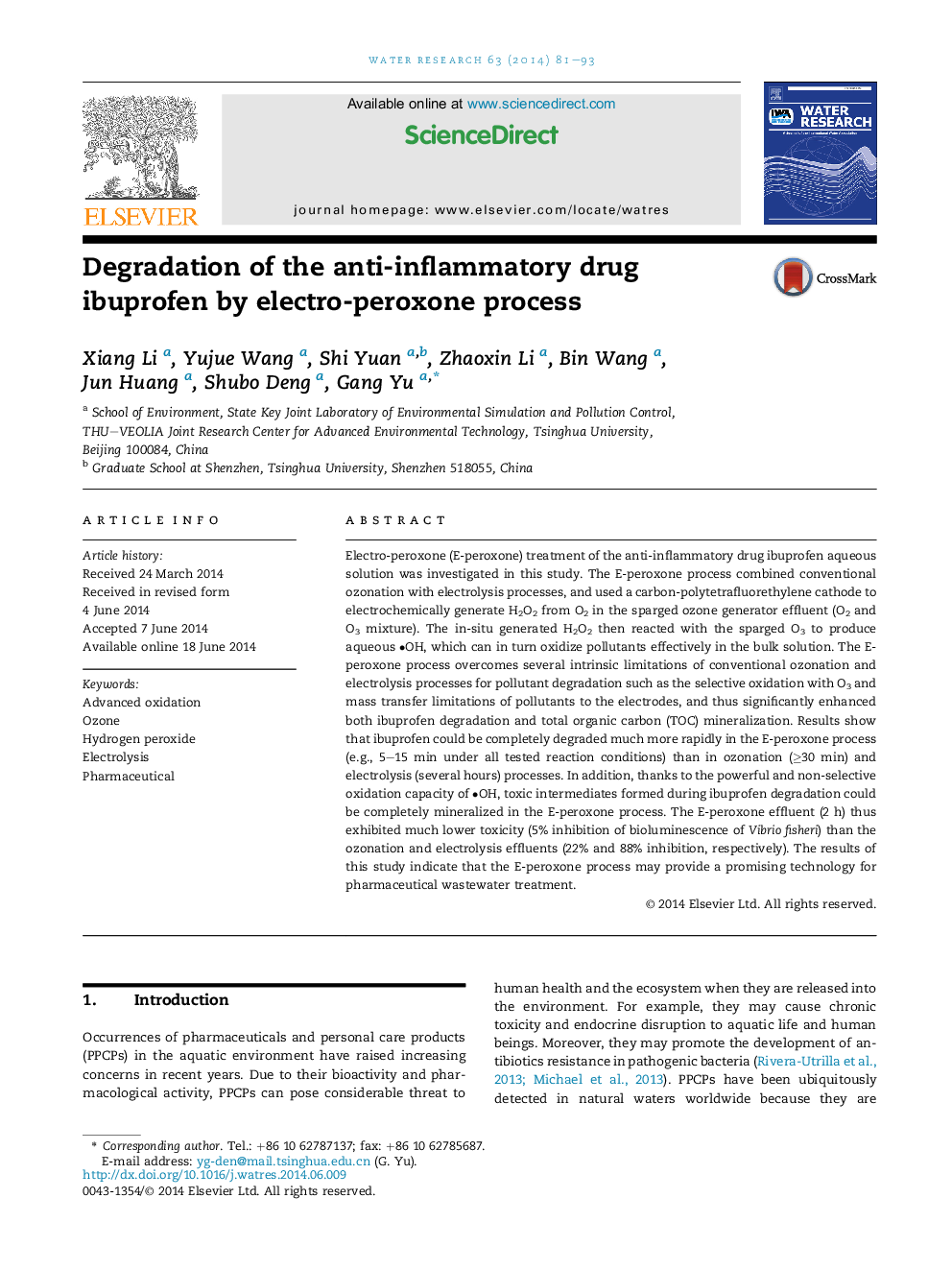| کد مقاله | کد نشریه | سال انتشار | مقاله انگلیسی | نسخه تمام متن |
|---|---|---|---|---|
| 4481462 | 1623105 | 2014 | 13 صفحه PDF | دانلود رایگان |
• E-peroxone combines ozonation with electrolysis to enhance ibuprofen degradation.
• H2O2 is electro-generated from O2 in sparged O2 and O3 gas mixture at the cathode.
•
• OH is produced from the reaction of sparged O3 with electro-generated H2O2.
• Ibuprofen is mineralized much faster in E-peroxone than in ozonation and electrolysis.
• E-peroxone may provide a promising technology to treat pharmaceutical wastewater.
Electro-peroxone (E-peroxone) treatment of the anti-inflammatory drug ibuprofen aqueous solution was investigated in this study. The E-peroxone process combined conventional ozonation with electrolysis processes, and used a carbon-polytetrafluorethylene cathode to electrochemically generate H2O2 from O2 in the sparged ozone generator effluent (O2 and O3 mixture). The in-situ generated H2O2 then reacted with the sparged O3 to produce aqueous
• OH, which can in turn oxidize pollutants effectively in the bulk solution. The E-peroxone process overcomes several intrinsic limitations of conventional ozonation and electrolysis processes for pollutant degradation such as the selective oxidation with O3 and mass transfer limitations of pollutants to the electrodes, and thus significantly enhanced both ibuprofen degradation and total organic carbon (TOC) mineralization. Results show that ibuprofen could be completely degraded much more rapidly in the E-peroxone process (e.g., 5–15 min under all tested reaction conditions) than in ozonation (≥30 min) and electrolysis (several hours) processes. In addition, thanks to the powerful and non-selective oxidation capacity of
• OH, toxic intermediates formed during ibuprofen degradation could be completely mineralized in the E-peroxone process. The E-peroxone effluent (2 h) thus exhibited much lower toxicity (5% inhibition of bioluminescence of Vibrio fisheri) than the ozonation and electrolysis effluents (22% and 88% inhibition, respectively). The results of this study indicate that the E-peroxone process may provide a promising technology for pharmaceutical wastewater treatment.
Figure optionsDownload high-quality image (192 K)Download as PowerPoint slide
Journal: Water Research - Volume 63, 15 October 2014, Pages 81–93
